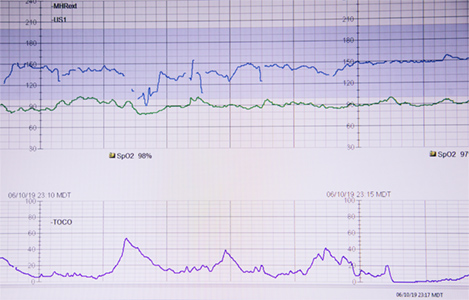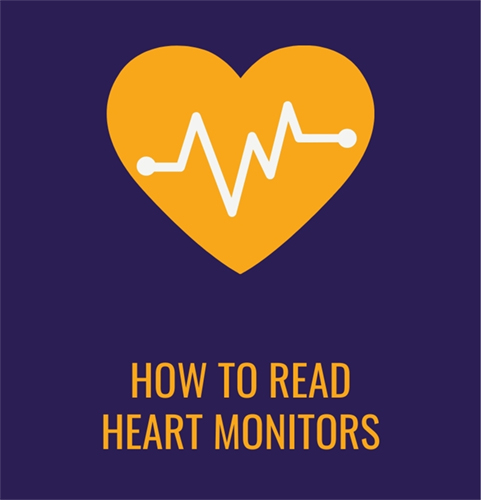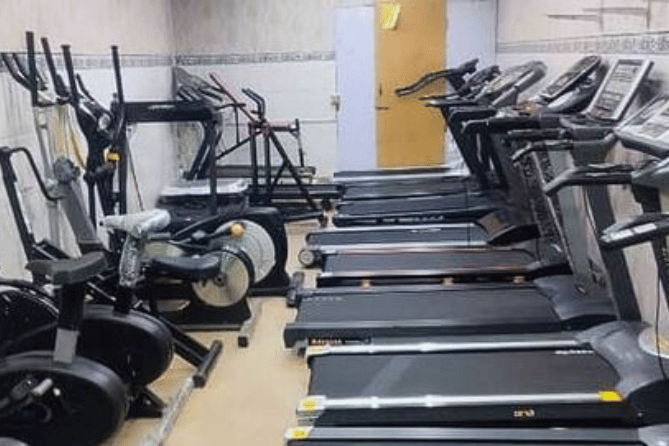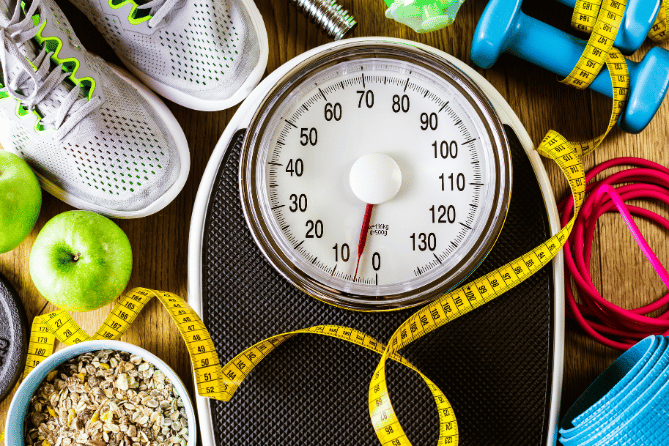Read Heart Monitors- Most of us don’t find the necessity to learn how heart rate monitors work unless of course, we see our loved ones in a hospital bed. We try to know what each beep and the numbers on the screen mean and provide help as much as we can.
Nowadays, heart rate monitors are not only used in the hospital but also used to monitor different heart rates during exercising. With the advancement of technology, we can see our heart rate on a wristwatch, while doing any physical activity instead of worrying about exceeding our limits.
Along with having a heart rate monitor wherever you need it, you can also calculate your heart rate manually. So, let’s get to know how to read a heart monitor.
How to measure heart rate?

We all know the importance of a healthy heart and how much it affects our body function overall. To know if your heart rate is normal, fast, or slow, you should know how to measure your heart rate.
Measuring heart rate gives you the idea of the condition your heart is in. Our heart with each beat pumps oxygenated and nutritional blood all over the body so ensuring it’s working properly is very significant.
As mentioned above, you can measure your heart rates in two ways. The first method is the old-fashioned manual method which is common to all of us, feeling the pulse of your wrist and neck. The second is the advanced method which is by reading a heart rate monitor.
How to check your heart rate manually
To check your heart rate manually you have to check your wrist and neck pulse. Your pulse can be measured by counting the number of times your heart beats in a minute, which is also known as beats per minute or BPM.
1. To find the pulse in your wrist:
Now, to find the pulse on your wrist, place your hand on a surface, the palm of your hand facing up. Use your fingers and press it on top of your wrist just below your thumb. First, do it lightly to feel the pulse, if you can’t find it, then press it a bit harder, that’s how you can find your radial pulse.
2. To find the pulse in your neck:
Press two of your fingers, the index, and middle finger to the side of your neck, along the windpipe just below your jaw to find the pulse of your neck which is also known as the carotid pulse.
Once you know where to place your fingers, count your pulse for 1 minute to know your heart rate. You can also count your pulse for 30 seconds and multiply your pulse by 2. So do whatever method is feasible to you.
Using the method mentioned above, you can easily find your resting heart rate measured in beats per minute.
Read Heart Monitors
A heart rate monitor displays all the common vital signs of your body. The numbers set out on the screen are important to monitor and you should know if everything’s under control. We are here to help you understand if your vital sign is normal or not and what the number denotes.
Here is the list of the resting vital signs a healthy adult has. Remember, these numbers are only for guidance, and always consult an expert when you’re dealing with these matters.
1. Heart rate
To measure the number of times a heart beats in 60 seconds. A healthy resting heart typically beats from 60 to 100 times per minute. If a person is more physically active, they might have a slower heart rate.
2. Body temperature
For a healthy adult, a normal temperature usually ranges from 97.8 degrees F to 99 degrees. However, the temperature also varies with gender, food ingestion, what you were doing previously, the time of the day, and even the menstrual cycle.
3. Blood pressure
There are two numbers recorded while measuring the blood pressure of a person. The first one is known as the systolic pressure also known as the higher number and the second one is the diastolic pressure, known as the lower number.
Blood pressure is considered normal when the systolic pressure is below 120 mm Hg and diastolic below 80 mm Hg.
4. Respiration rates
The normal breathing rate of a healthy resting adult in a minute is 12 to 16 times. But there are other factors involved, for example, check if the person typically has any difficulty breathing or suffering from any medical conditions.
5. Oxygen saturation
It measures the number of oxygen in your blood. Normal oxygen saturation is 95 or higher on a scale of 100. if the number is lower than that it usually means your body is not getting an adequate amount of oxygen supply.
How does a heart monitor work?
A heart rate monitor usually works by measuring electrical signals and transmitting the signal to the screen of your monitor. Sometimes, the signals are transmitted using different methods, applying patches that stick to your skin or attached to your fingers.
The devices have improved a lot with age, and many of the monitors have advanced features like touch screen technology from which you get the information wirelessly. In addition, there are also chest straps, smartwatches, etc. to monitor your heart rate.
The monitors commonly display your heart rate, body temperature, and blood pressure. The advanced ones also show your respiration rates, the pressure in your brain, the amount of oxygen your blood is transferring, and the amount of carbon dioxide you’re exhaling.
These are the vital signs and it is mainly used in observing and finding any problems in your body. Besides, the monitor automatically makes sounds once any of the vital signs are not in their normal range, alerting you of any problems immediately.
Few things to know about heart rate monitors
While monitoring your heart rate, there are few important things to take note of, for instance, what is a regular and irregular pulse rate and what your target heart rate should be? Besides, the resting heart rate is also known as the RHR, and the Maximum heart rate is known as the MHR.
Thus, we can give you a brief idea about these topics to get a better understanding.
What is a regular pulse rate?
A regular pulse rate as we all know is from 60-100 bpm, it is also known as the resting heart rate of a person. The method to calculate your resting heart rate is to check your carotid and radial pulse. The best time to know your resting heart rate is when you wake up right after a good night’s sleep.
You can also calculate your resting heart rate any time of the day, however, if you’re active before, make sure you are at ease and rest for 5-10 minutes then calculate your heart rate for accurate results. People who are physically more active have an RHR of less than 60 bpm.
Some beverages that can make your heart a bit faster than normal are when you drink caffeine, smoke, or do drugs.
What is an irregular pulse rate?
Irregular heart rate is also a condition known as arrhythmia which happens when your heart doesn’t beat at a steady and normal pace. You may notice when your pulse is beating too fast even when you’re resting.
Sometimes, the heartbeat is very slow and other times it’s racing abnormally. You might experience these irregular heart rates at some point and it’s okay to experience them, however, get yourself checked cause it’s better to stay on the safe side.
What is the maximum heart rate?
When your body is physically active and doing heavy tasks, that’s when your heart beats fast. Your MHR is the number of beats done in a single minute when you’re doing your maximum activity. Maximum heart rate is important to find as the target heart rate is calculated using your MHR.
So, the method to calculate MHR is: 220 – age
MHR also varies with people who have the same age, gender, and size. As we age our MHR value also varies.
Target heart rates for different groups
Target heart rate is your maximum heart rate. While exercising, a target heart rate is a range in which your body can achieve a certain level of fitness to improve your aerobic activities.
It is shown in percentages and usually, the range of a target heart rate varies from 50% – 90% depending on many factors like age, sex, fitness level, etc. Here is a small table to understand what your target heart rate zone is, according to your age and MHR.
| Age | Maximum Heart Rate approximate (MHR), 100% | Target Heart Rate zone, 50-90% |
| 25 | 195 bpm | 97.5 – 175.5 bpm |
| 35 | 185 bpm | 92.5 – 166.5 bpm |
| 45 | 175 bpm | 87.5 – 157.5 bpm |
| 55 | 165 bpm | 82.5 – 148.5 bpm |
| 65 | 155 bpm | 77.5 – 139.5 bpm |
| 75 | 145 bpm | 72.5 – 130.5 bpm |
You can find your target heart rate from the age category. While performing a moderate exercise, the target heart rate is from 50-70% of the maximum heart rate and while performing strenuous activities, the target heart rate is from 70-90% of the maximum heart rate.
Different heart rate measuring methods
Besides using the radial and carotid pulse to measure your heart rate manually, there are also other methods you can go for. You can read about the following methods and decide which might be the best option for you while taking into consideration of your plans as well as your costs.
1. Activity trackers:
Activity trackers and fitness trackers mainly come in the form of smartwatches and wristbands. These trackers help you keep a count of your heart rate in bpm, your everyday calorie burns, steps count, and also alert you when you’ve reached your goal.
There’s a downfall, they are expensive and the accuracy of these trackers is questionable
2. Chest strap monitor:
This monitor is worn around our chest and it works when the integral electrodes in the chest strap record the electrical signal that the heart transfers as it beats. It gives a very good prediction of your heart rate and works similarly to the electrocardiogram. It is the most reliable method and is used by athletes.
Of all the heart rate monitors, this is the best option to go for. There is only one thing to make sure of, it is the correct placement of the strap.
3. Pulse oximeter :
A pulse oximeter is a small device generally placed on the tip of your fingertip, toe, or earlobe. It is used to measure the oxygen saturation and the pulse rate of the heart by using light beams. It is designed to check how well the heart is pumping oxygen to your body.
The oxygen saturation in the pulse oximeter is accurate when the level is above 80%. Besides, it is not the best monitoring device to use while exercising.
4. Testing for Electrocardiogram (ECG) :
It is a diagnostic method used to check for any heart disease by accessing your heart’s electrical activity. Firstly, by placing electrodes on top of your chest then the electrode will transmit the data which will be shown on the ECG machine. Later the machine will create a wave pattern displaying the condition of the heart.
This test is done for people who want to participate in any physical activity safely and to check for any heart disorders. From this test, you can also get the accurate MHR which is the Maximum Heart Rate.
ECG has few limitations, during the process of doing the test, it only picks up the heart rate and rhythm only for very few seconds so if problems like arrhythmia occur irregularly, the test won’t detect it.
5. Testing for Photoplethysmography (PPG) :
This technology finds the volumetric variations of blood circulation by using a light source and a photodetector on the skin’s surface. The PPG signal can be used to extract various significant information about the heart’s condition in addition to finding out the pulse oximetry.
Analyzing the PPG signal can help doctors find out if you have any kind of Cardiovascular disease such as atherosclerosis and arterial stiffness. It can also help in the detection of CVDs that may pop in down the line in your life.
In the world of expensive health care sensors for monitoring the heart rate, you find a very affordable one in PPG which is also not as invasive as the other sensors.
Heart rate monitor features

With the progress of our technology, nowadays, there are a number of advanced heart rate monitor features to check out.
Pulse monitoring:
Without the hassle of counting your pulse rate manually, simply just check your heart rate by resting your finger on the sensor and getting immediate, accurate results. Just make sure your fingers are not too cold, for them to work properly.
Heart rate recovery:
Heart rate monitors can also measure Heart rate recovery(HRR), which is commonly used to measure the amount of time it takes for the heart rate to drop back to normal. the shorter the HRR is, the healthier you are.
Heart rate target zones:
These monitors have multiple target zones for the heart rate. Each can be preset to react to your different workouts. Some zones might require more time, some less.
Observe the speed and distance
Using the latest GPS technology, monitors can now measure the distance you ran and the speed you ran, which is very helpful in daily jogging sessions.
Calorie Counter
As the name says, it basically calculates the number of calories you can burn when exercising and is a must-have for those losing weight to reach a specific target weight. Most heart rate monitor watches have this feature.
Stopwatch and lap times
It’s very common for monitors to include stopwatches and lap times in their devices. The built-in feature helps to measure the workout time and the speed in races.
Heart rate monitoring devices
Luckily for us, there are many portable heart rate monitors that we can carry with us for running, walking, or any kind of exercise purposes. In addition to this, it can keep track of your heart rate, your cardio workouts, and many more things.
Here are a few of the heart rate monitoring devices you can check out.

For chest straps, here are options to look at and find out which one is the best for you. POLAR H9 Heart Rate Sensor, Garmin Garmin HRM-Run.
If you’re interested in smartwatches, some of the good ones with heart monitors would be the Apple Watch Series 6, Fitbit Versa 3, Wilful Smart Watch, and Garmin Vivosmart 4.
I have a fully detailed article on the best heart rate monitor watches including a comprehensive buying guide,if you are interested in them. These are growing in popularity due to their convenience.
Stay safe and healthy
It’s very significant to know your heart rate while doing any physical activity, thus, it is essential to know how to read a heart rate monitor. Besides knowing the heart rate, the heart rate monitor also benefits you in so many ways by giving all the necessary readings for you to keep up. Learning how to read a heart rate monitor now doesn’t seem too difficult, right?








